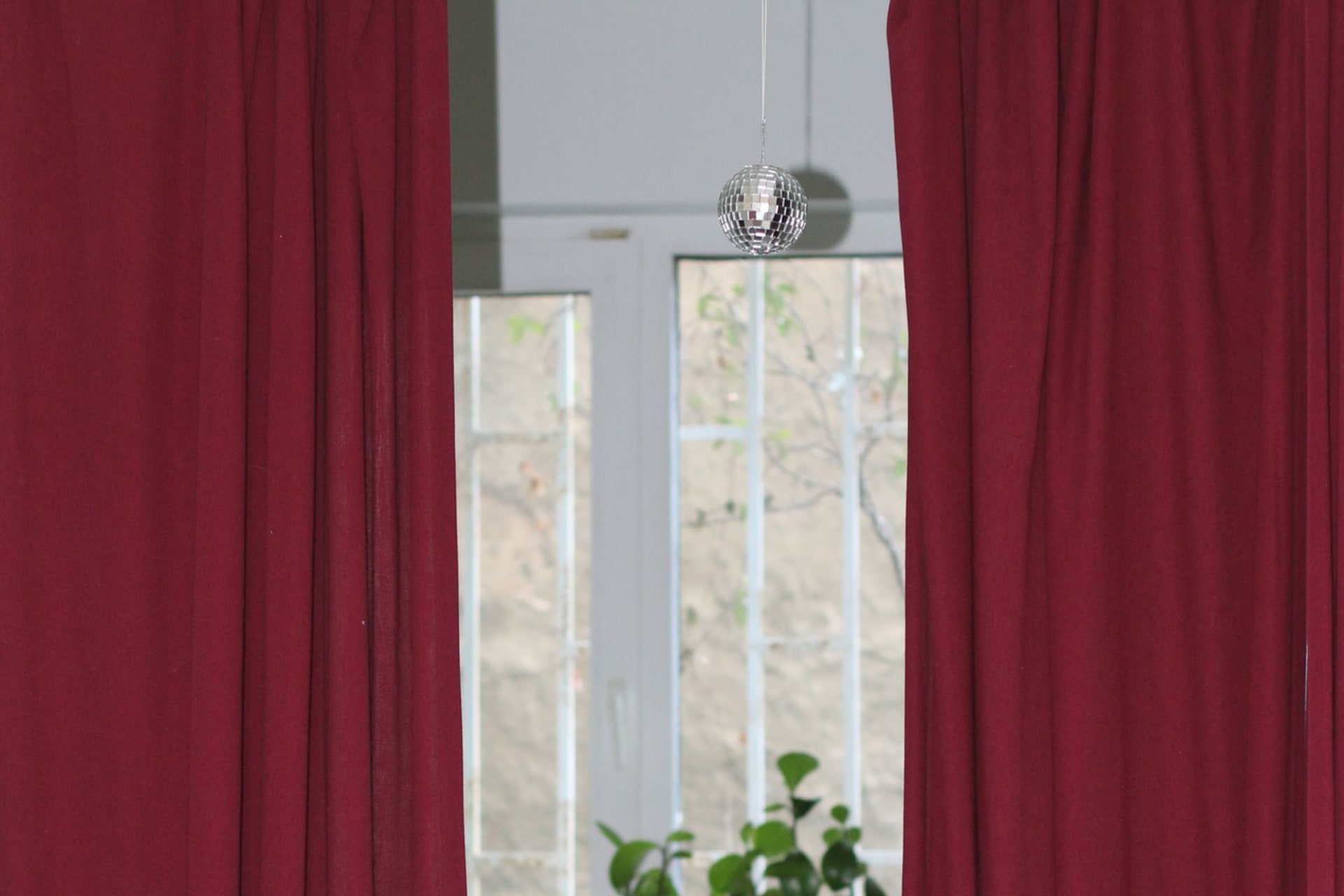Eline Tsvetkova *1992 (NL/BG)
currently based in Zürich/Istanbul
Eline Tsvetkova *1992 (NL/BG)
currently based in Zürich/Istanbul
Living in a Potemkin village.
In the story of the Potemkin village, the Russian Queen Catherine the Great decides to visit her newly conquered territory in the South. The Prince Grigory Potemkin (Catherine’s lover) added beautiful facades to the fronts of village houses, to conceal the poverty and destruction from the Queen as she passes by in her carriage. Who is living in this village today? Most of us; Western Europe, the formally known Eastern Block, and many more places I presume. Nevertheless, I am not in the position to speak on their behalf. I do not have the authority to speak on anyone’s behalf besides my own. Instead, I mix cultural expressions together to understand positions, uniting them in their everyday facades and supply the visitor with a fictional set of objects and photographs. There are several reasons why I like to use the term Potemkin village as an example. Whether or not the story of the Potemkin village is true, is irrelevant to my work. The concept of layers and concealment, of beautifying a place or thing that is destroyed, poor and miserable is what is intriguing, for being absurd and astounding. The Potemkin Village depicts for me the currently ubiquitous manipulation of images. Political manipulation of images, as well as personal ones, apply to the function of social media, even within our own homes.
Do we not also partake in a fictionalised living situation? A spectacle in which we are acting our ‘potential’ self? If the story of the Potemkin Village did not actually happen in the past, it has now. I’m keen on working with situations that evoke questions and doubts around the circumstances that triggered the creation of a scene that leaves one to wonder: what happened here? Such pieces of information are fragments of objects, film and performances that are put together not because they are directly related to one another. Rather, the props I create for a space enhance a feeling of detachment and certain alienation. These objects in combination with their set-up suggest a momentary existence or encounter. Personally, the moment the work is activated is through the presence of the visitor and/or performer. The presence of a body is needed for the atmosphere and mood of an installation to become apparent or else it becomes the remains of a set purely with the potential to become a scene. My desire is to create installations, performances and films that trigger the sensation of having perceived or experienced a situation personally. The objects are not physically attached to the space and could potentially be moved without leaving a trace. It is a matter of being at the right place at the right time, or at least, it is this feeling I strive to evoke. Like observing a Potemkin set-up, as you watch the Queen drive by the village with a smile of satisfaction, while you wonder: why all the effort?
__________
Besides being a fervent collector of things, I’m also a collector of topics and stories. My main topics and themes revolve around hauntology, displaying fiction, female/male gaze, the orientalist gaze, memory of keepsakes and architecture, & the language of cinema.
High gloss wooden floor boards accompanied with colourful outdated tiles, evidently leftovers and brass taps entangled and connected to impracticality. This assemblage of found material consists of various objects and photography, mingling the artist’s own Bulgarian family archive with photographs retrieved in Istanbul. What is presented is a collection of group photographs that recall sun-faded advertisements, though one is not quite sure whether these photographs derive from the same source or same communal consciousness. Behind the glass window the visitor is welcomed by multiple grins celebrating togetherness in a playful intimate manner, side to side, dusk to dawn, ashes to ashes, captured (by) the shadow photographer. The convergence of these bodies of works creates a connective tissue of imagery, ideas, and relationships between collected and deployed materials in a manner that determines what we attempt to find, and subsequently also what we seek. The result of these findings is a combined body of site-specific work that can be viewed across two different spaces.
The collection of interior objects in the passage and vitrine shop is in a state of ordered flux and will not disclose whether its setting wants to be a stage for some purpose or a décor that enacts a forgotten deserted display. A collage of atmospheres contained within these particularly picked objects resulting into what has been called a ‘meshmorable’ portmanteau; a memory-muster that does not disclose a hierarchy or a linear truth.
The anima and animus derives out of the collective unconscious theory that was developed by Carl Jung as part of the school of analytical psychology. Jung described the animus as the unconscious masculine side of a woman, and the anima as the unconscious feminine side of a man, each transcending the personal psyche.
These are 2 short portraits of women performing what they believe their animus to look like. All portraits are staged in a cinematic manner that I chose and developed. A twist on the male gaze on female roles typically framed and depicted as "portraits" in cinema. Work in progress.
These are images of


![[untitled]](https://res.cloudinary.com/rca2020/image/upload/f_auto,h_1920,w_1920,c_fill,g_auto,q_auto/v1/rca2021/60c62183101fec8c9f4411ad-193441?_a=AXAH4S10)
![[untitled]](https://res.cloudinary.com/rca2020/image/upload/f_auto,h_1280,w_1920,c_fill,g_auto,q_auto/v1/rca2021/60c62183101fec8c9f4411ad-905302?_a=AXAH4S10)
![[untitled]](https://res.cloudinary.com/rca2020/image/upload/f_auto,h_1280,w_1920,c_fill,g_auto,q_auto/v1/rca2021/60c62183101fec8c9f4411ad-299376?_a=AXAH4S10)
![[untitled]](https://res.cloudinary.com/rca2020/image/upload/f_auto,h_1280,w_1920,c_fill,g_auto,q_auto/v1/rca2021/60c62183101fec8c9f4411ad-959984?_a=AXAH4S10)
![[untitled]](https://res.cloudinary.com/rca2020/image/upload/f_auto,h_1280,w_1920,c_fill,g_auto,q_auto/v1/rca2021/60c62183101fec8c9f4411ad-214412?_a=AXAH4S10)
![[untitled]](https://res.cloudinary.com/rca2020/image/upload/f_auto,h_1280,w_1920,c_fill,g_auto,q_auto/v1/rca2021/60c62183101fec8c9f4411ad-103509?_a=AXAH4S10)
![[untitled]](https://res.cloudinary.com/rca2020/image/upload/f_auto,h_1536,w_1920,c_fill,g_auto,q_auto/v1/rca2021/60c62183101fec8c9f4411ad-187?_a=AXAH4S10)
![[untitled]](https://res.cloudinary.com/rca2020/image/upload/f_auto,h_1280,w_1920,c_fill,g_auto,q_auto/v1/rca2021/60c62183101fec8c9f4411ad-747645?_a=AXAH4S10)
![[untitled]](https://res.cloudinary.com/rca2020/image/upload/f_auto,h_1920,w_1920,c_fill,g_auto,q_auto/v1/rca2021/60c62183101fec8c9f4411ad-159904?_a=AXAH4S10)
![[untitled]](https://res.cloudinary.com/rca2020/image/upload/f_auto,h_1536,w_1920,c_fill,g_auto,q_auto/v1/rca2021/60c62183101fec8c9f4411ad-628272?_a=AXAH4S10)
![[untitled]](https://res.cloudinary.com/rca2020/image/upload/f_auto,h_1920,w_1920,c_fill,g_auto,q_auto/v1/rca2021/60c62183101fec8c9f4411ad-689841?_a=AXAH4S10)
![[untitled]](https://res.cloudinary.com/rca2020/image/upload/f_auto,h_1920,w_1920,c_fill,g_auto,q_auto/v1/rca2021/60c62183101fec8c9f4411ad-36364?_a=AXAH4S10)
![[untitled]](https://res.cloudinary.com/rca2020/image/upload/f_auto,h_2560,w_1707,c_fill,g_auto,q_auto/v1/rca2021/60c62183101fec8c9f4411ad-815631?_a=AXAH4S10)


![[untitled]](https://res.cloudinary.com/rca2020/image/upload/f_auto,h_1707,w_1920,c_fill,g_auto,q_auto/v1/rca2021/60c62a0a101fec8c9f4eda5e-399984?_a=AXAH4S10)



